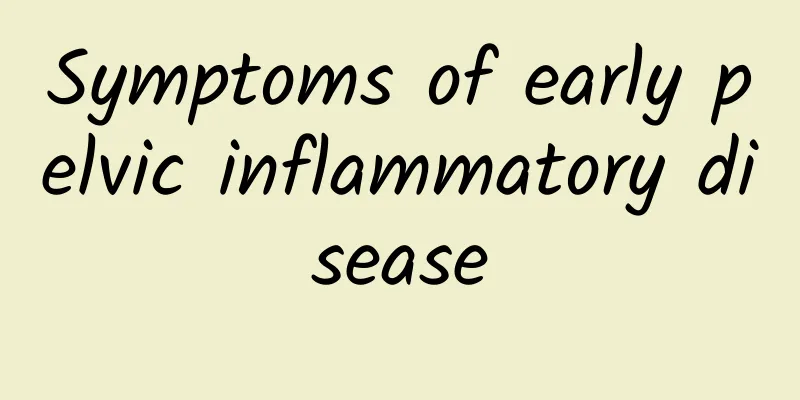Symptoms of early pelvic inflammatory disease

|
Pelvic inflammatory disease is a common gynecological disease that has a serious impact on women's life and work, so it is necessary to take preventive measures, be familiar with some common knowledge about pelvic inflammatory disease, and prevent it before it happens. The symptoms of acute pelvic inflammatory disease are: rapid onset, severe condition, lower abdominal pain, fever, chills, headache, loss of appetite. During the examination, the patient was found to be acutely ill, with high temperature, fast heart rate, muscle tension, tenderness and rebound pain in the lower abdomen. Pelvic examination: There is a lot of purulent discharge in the vagina, the fornix is obviously tender, the uterus and bilateral adnexa are tender, rebound tender, or one side of the adnexa is thickened. The symptoms of chronic pelvic inflammatory disease are characterized by slow onset and long course. The systemic symptoms are mostly not obvious, but may include low fever, fatigue, and lower abdominal pain. During the examination, it is found that the uterus is often posterior, limited in movement, or adherent and fixed. Acute and chronic pelvic inflammatory disease can be diagnosed based on medical history, symptoms and signs. However, differential diagnosis must be done well. The main differential diagnosis of acute pelvic inflammatory disease includes: acute appendicitis, ectopic pregnancy, ovarian cyst pedicle torsion, etc.; the main differential diagnosis of chronic pelvic inflammatory disease includes: endometriosis and ovarian cancer. The systemic symptoms of chronic pelvic inflammatory disease are sometimes low fever and fatigue. Some patients develop neurasthenia symptoms due to the long course of the disease, such as insomnia, lack of energy, and general discomfort. The lower abdomen is distended and painful, and the lumbar and sacral pain is often aggravated after fatigue, sexual intercourse, and before and after menstruation. Chronic inflammation can lead to pelvic congestion, menorrhagia, menstrual disorders when ovarian function is damaged, and infertility when the fallopian tubes are blocked by adhesions. |
<<: What are the causes of ovarian cysts?
>>: It's been seven days since my period began, but I still feel a little shaky
Recommend
5 major symptoms of menopause in women
Women usually experience five major symptoms befo...
How to regulate menstrual irregularities during menopause? How to regulate menstrual irregularities?
Women in menopause are also prone to irregular me...
Beware of the 6 major hazards of uterine fibroids
Uterine fibroids are a benign tumor that occurs o...
What measures can be taken to prevent chocolate cysts?
The prevention of chocolate cysts must pay attent...
Dysmenorrhea treatment can help women get rid of the disease
Dysmenorrhea treatment is something that women mu...
If you use your muscles incorrectly, the exercise may be in vain!
The same exercise movement requires the cooperati...
Why is it that female cervical erosion cannot be cured for a long time? There are three reasons why female cervical erosion cannot be cured.
It is quite common for women to suffer from cervi...
A brief discussion on the prevention of ovarian cyst deterioration
Ovarian cysts are a type of ovarian tumor that is...
Can methotrexate treat ectopic pregnancy?
Methotrexate can be used to treat early ectopic p...
The infectiousness of endometrial tuberculosis
Endometrial tuberculosis is a common gynecologica...
How to break through the weight loss plateau? Master these five key points to lose weight (Part 2)
People often ask nutritionists, "I haven'...
The best hospital for congenital absence of vagina
Where is the best hospital for the treatment of c...
Diet therapy for polycystic ovary
Women with polycystic ovaries do not have any sym...
What are the pathological characteristics of ovarian cysts and what should you eat after surgery?
Sitting for a long time can easily lead to blood ...
How to cure chronic pelvic peritonitis
The occurrence of pelvic peritonitis is related t...









